The rugged mountains are unlike anything I’ve seen before. The contrast of the teal Araks river against the tan stone is breathtaking, and it looks like something out of a movie — a movie I never want to end.
I’m in Meghri, Armenia’s southernmost city, sitting among pomegranate trees and grapevines looking out into Iran and admiring how serene the border is. It’s day three of a four day reporting trip to Armenia’s southern Syunik province in a group with five other TAP (The Armenia Project) interns. My only expectations came from my own research where I learned about the unique nature and the conflicts facing the region. I anticipated seeing beautiful scenery, but I quickly learned that it’s a place you can’t fully get to know without talking to the people.
Friday, July 18
We left Yerevan at 6:30 a.m. for Kapan. The city landscape quickly became wide open green land, and Mount Ararat sat on the horizon illuminated by the sunrise. It was the clearest, closest view I’ve seen, and gazing out the van window at one of Armenia’s most prominent symbols was the perfect start to the trip.
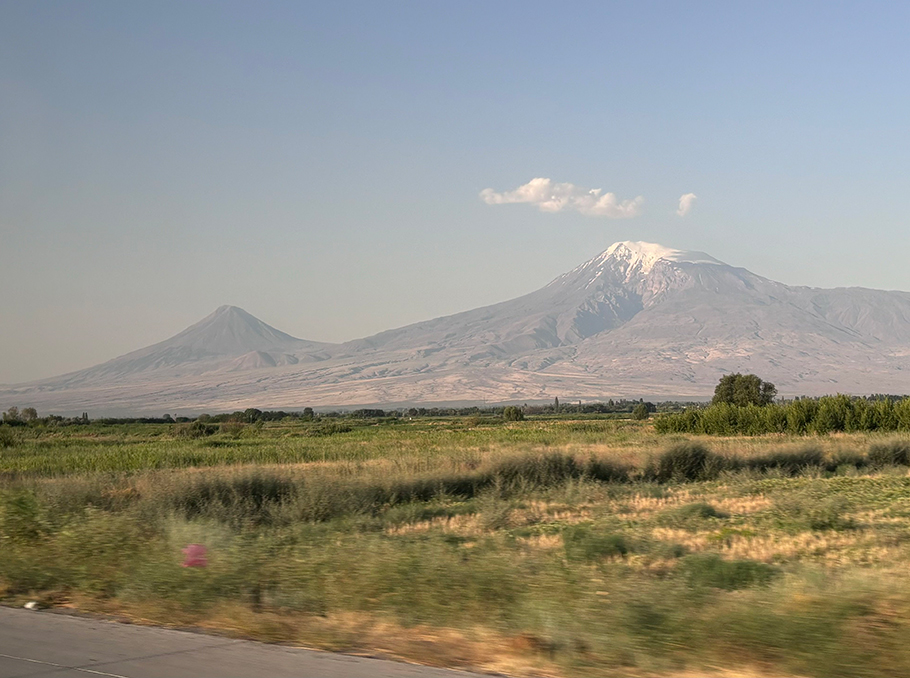
Photo: Charlotte Snoonian/Mediamax
We made stops at Tatev Monastery and Vahanavank Monastery. To reach Tatev, we took the world’s longest reversible cable car over the rich, green mountains. I don’t think there’s a place in all of Syunik where there isn’t an incredible view of the distinctive nature.

Photo: Charlotte Snoonian/Mediamax
Inside each monastery, I admired the stunning architecture and learned that the walls of Armenian monasteries are often kept quite simple so the focus remains on spirituality.
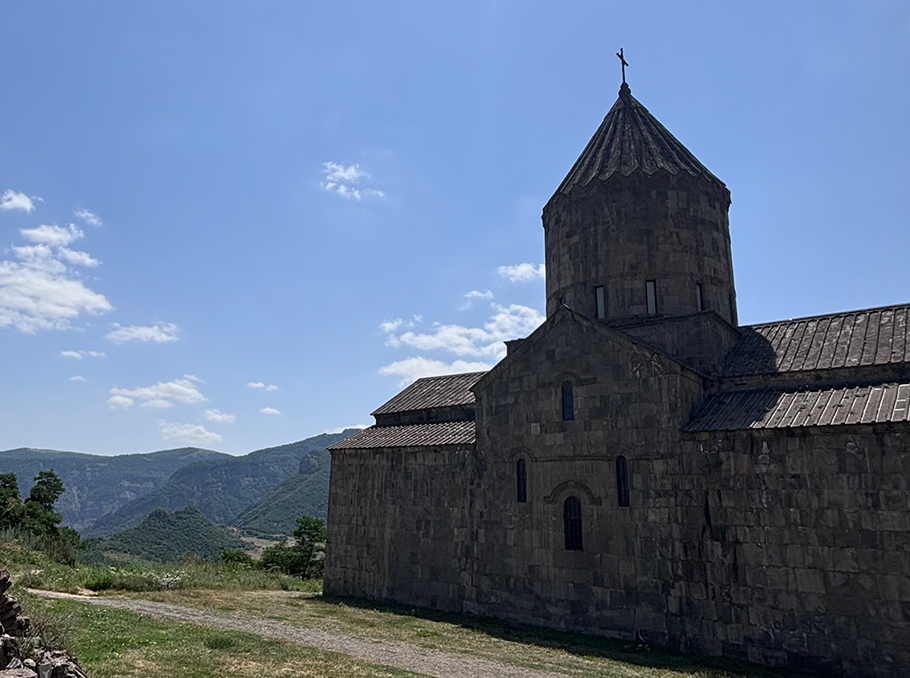
Photo: Charlotte Snoonian/Mediamax
In Vahanavank, we met the priest who came from Iraq. Outside the monastery, he showed us an old tree and taught a beautiful lesson: with strong roots, you will be able to regrow from anything.
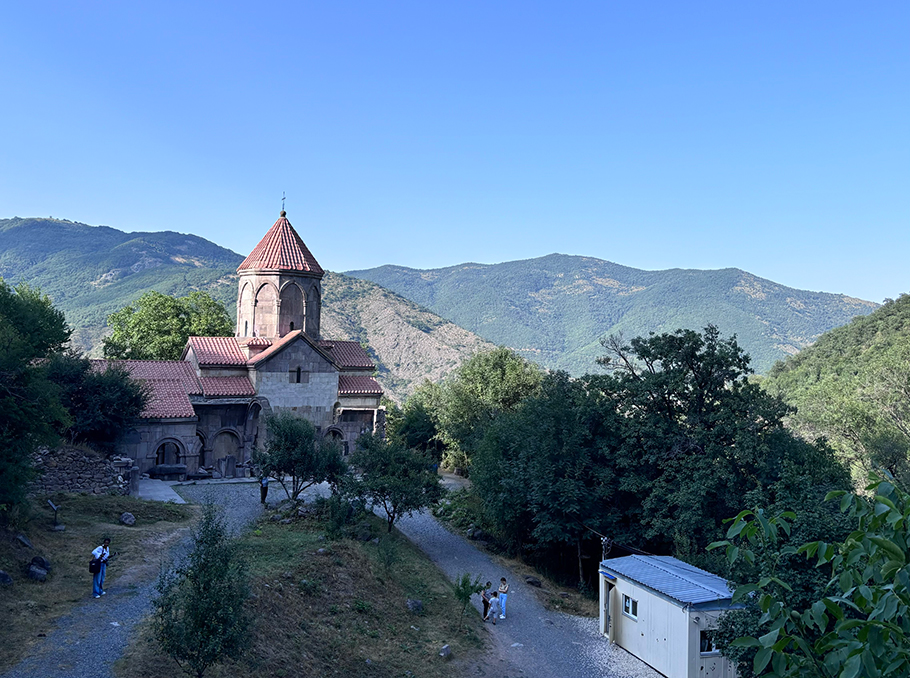
Photo: Charlotte Snoonian/Mediamax
Saturday, July 19
Today, I was immersed in the hospitality of the Armenian people. We spent most of the day in border villages talking to people who live under constant threat from Azerbaijan. In Nerkin Hand, a family shared how they go about their lives when the village is subject to shootings and landmine explosions on a regular basis.
The family invited us into their home, and Hasmik, the grandmother, would not sit down until the table was covered in platters of sweets and fruit from their own garden. She even shared some of her freshly made mulberry vodka.
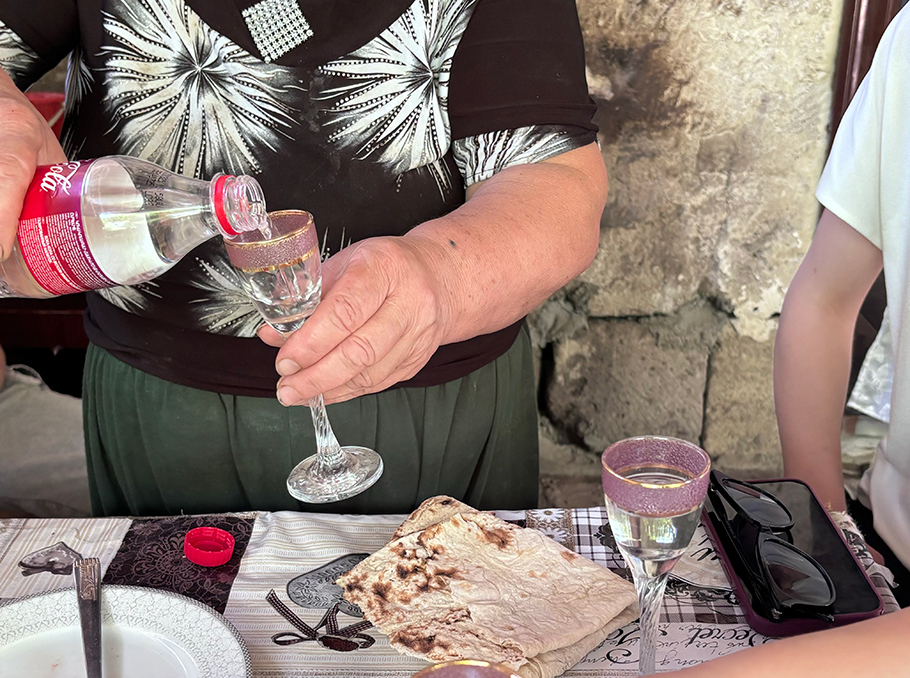
Photo: Charlotte Snoonian/Mediamax
In Tsav, we spoke to a few people about their role in the village. A woman showed us her bakery, and a construction worker from Iran told us about the renovations he was beginning on the village school.
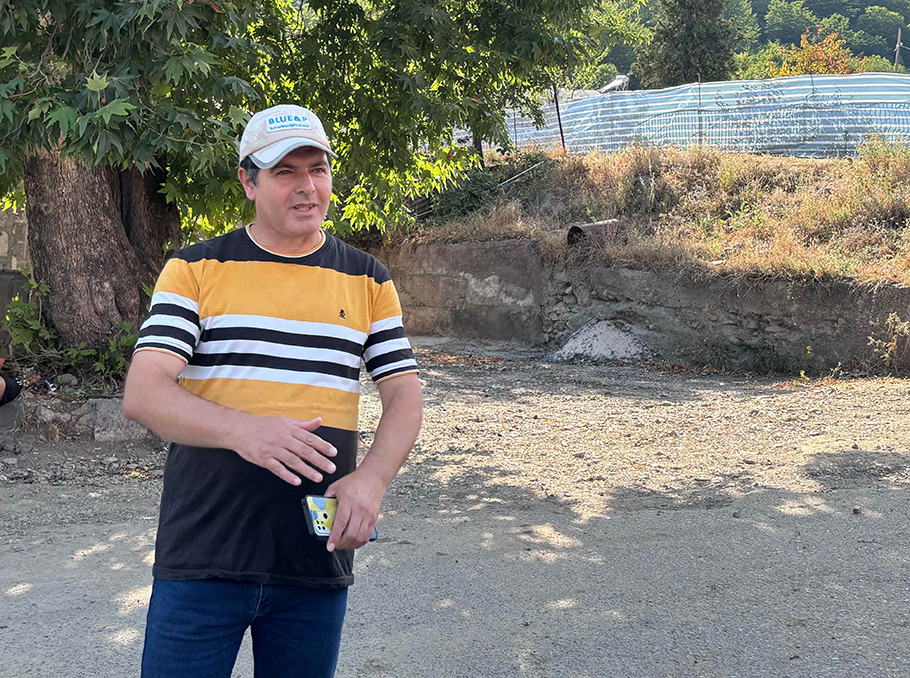
Photo: Charlotte Snoonian/Mediamax
He’s chosen to work in Armenia because he loves the people, and he said any time he goes back to Iran, he longs to come back to Armenia because of the freedom and hospitality he feels. I felt that same sense of hospitality that’s unlike anywhere else.
Sunday, July 20
We made our way further south to Meghri today, and the rolling, green mountains quickly transformed into rugged, rocky peaks. Sitting right on the Iranian border, Meghri’s scenery is unlike the rest of Armenia. The Araks river acts as the border with only a fence before it, and it’s peaceful and quiet.
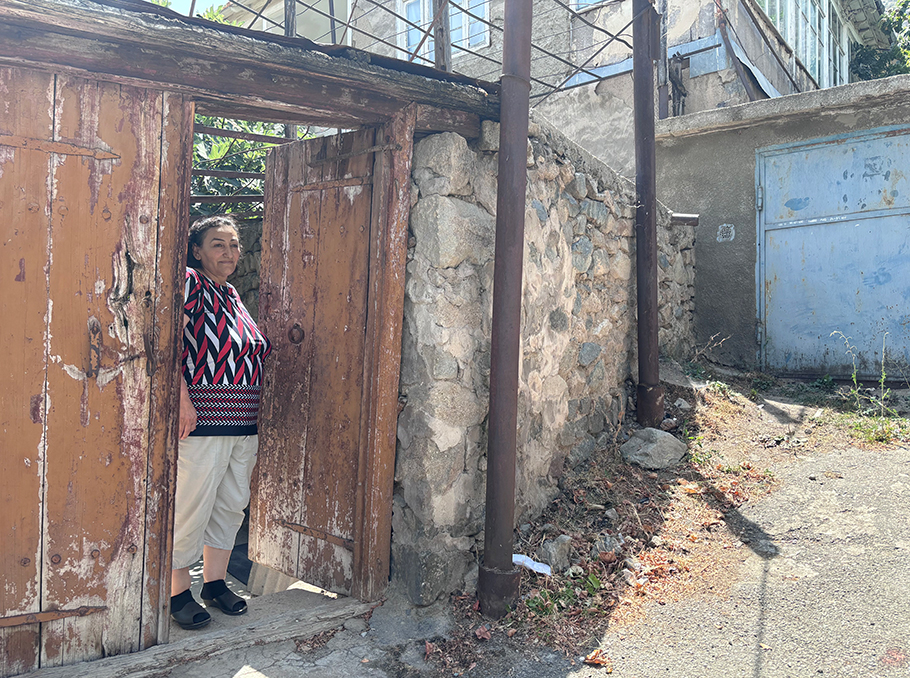
Photo: Charlotte Snoonian/Mediamax
In the morning, we met a woman named Ruzanna who lives in a village of Meghri. She came here from Artsakh in 2023 when over 100,000 Armenians were displaced. We were invited into her home, and as she set out coffee and fruit from her garden, she told us her story. Ruzanna rents her home in Meghri, and she won’t plant anything new in her garden so she doesn’t become tied down here. She told us she will go back to Artsakh when it’s Armenian again. We parted ways with a hug and a warm smile from her.
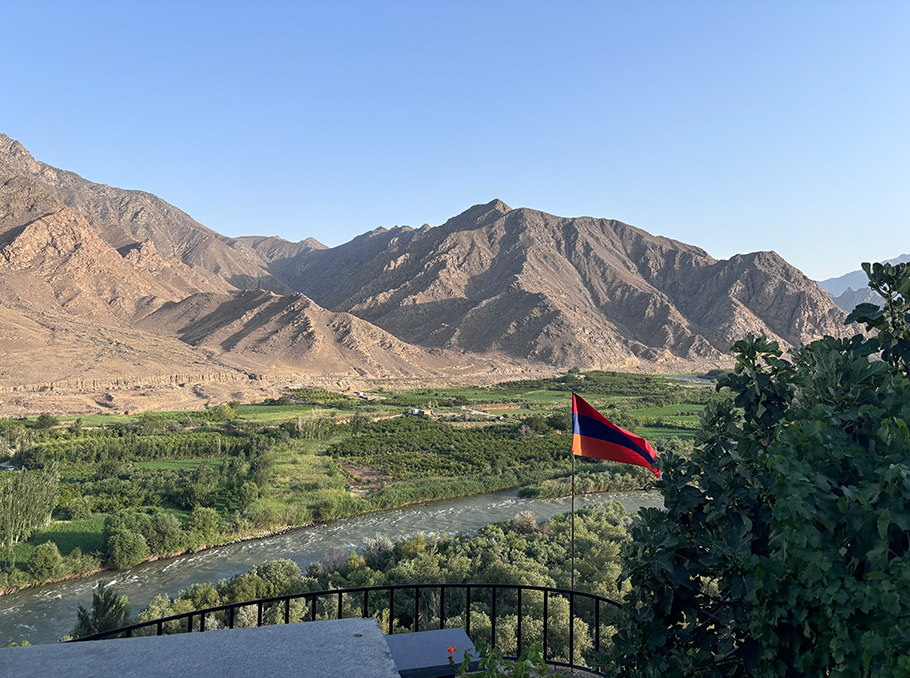
Photo: Charlotte Snoonian/Mediamax
In the evening, we spent time in a garden built by a man named Zhora. It was a longtime dream of his to build a home and a garden overlooking the river and mountains, and it was a view I could sit and stare at for hours. On the last night of the trip, it was the perfect setting to reflect on the stories I’d heard.
Monday, July 21
To continue the beautiful ending to this trip, we had a home-cooked breakfast at Khachouts Toun, an inn run by a woman named Shahane. The balcony overlooked the entire town of Meghri nestled among the mountains. As I looked out onto the town, I didn’t want to leave the hospitality and stunning nature of Syunik, and I thought about how the town looks so peaceful here, yet the entire province is vulnerable to constant tension and threats. By just seeing the towns, it’s not obvious. The true stories came from the people.

Photo: Charlotte Snoonian/Mediamax
The drive back to Yerevan was long, with the roads winding up and down mountains almost the whole way back. It was evening by the time we got close to Yerevan, just in time to watch the sun set in the distance next to Ararat.
Armenia is a small country, and my time exploring has shown me that each region has its own special characteristics. The nature and landscapes change quickly, and even the dialects are unique. But one thing remains the same throughout Armenia and will be what I miss most when my time here comes to an end: the people and their hospitality.
By Charlotte Snoonian
Charlotte Snoonian is an Armenian-American student from Boston. She has arrived in Armenia through the initiative of The Armenian Project (TAP) created by the Hovnanyan Foundation and is working as an intern at Mediamax media company.








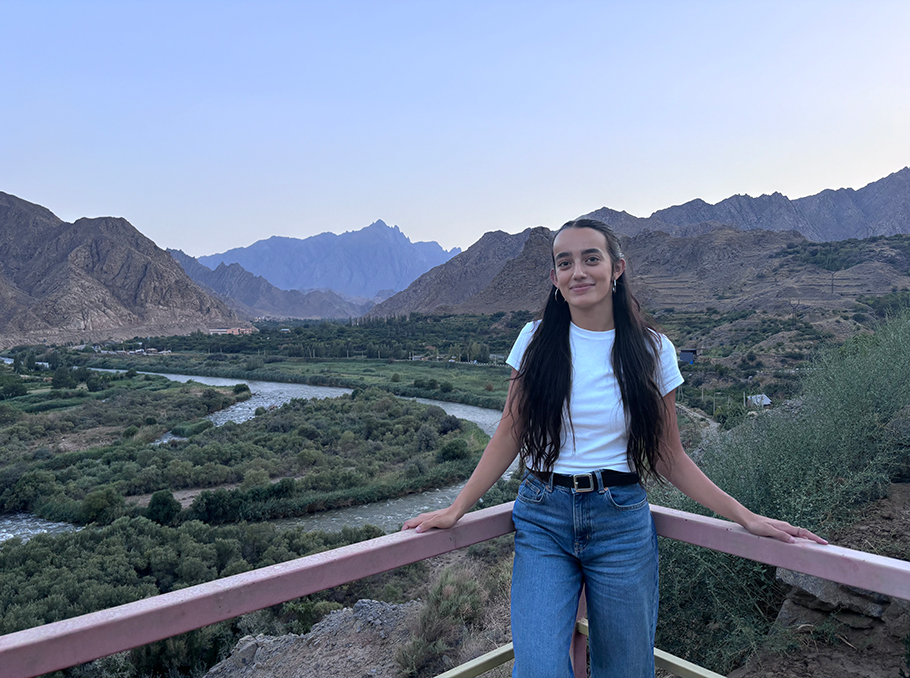
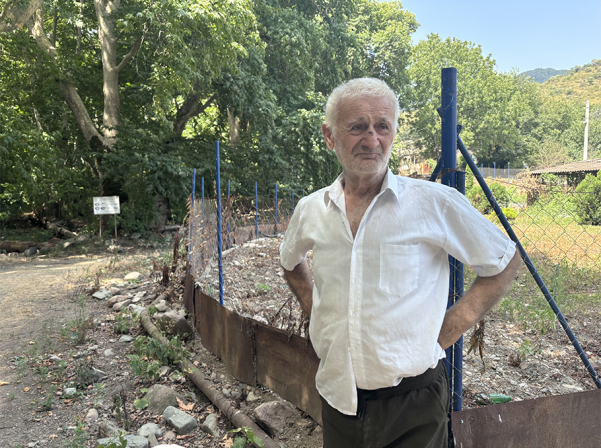







Comments
Dear visitors, You can place your opinion on the material using your Facebook account. Please, be polite and follow our simple rules: you are not allowed to make off - topic comments, place advertisements, use abusive and filthy language. The editorial staff reserves the right to moderate and delete comments in case of breach of the rules.